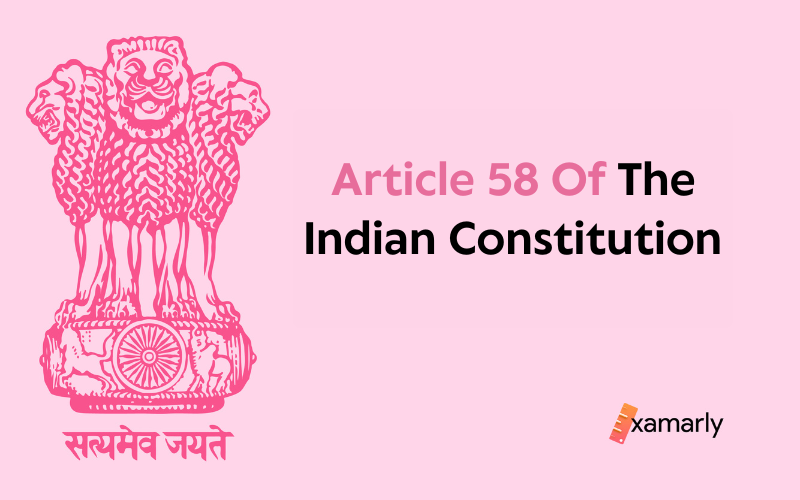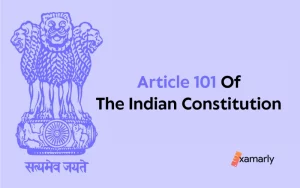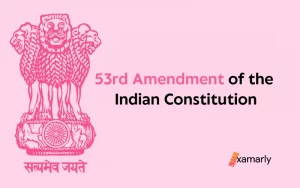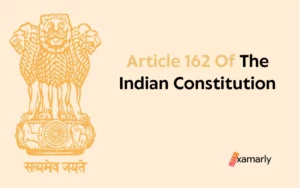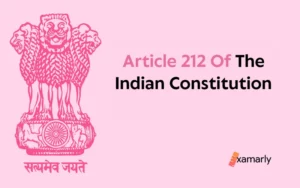India is a democratic nation with a particular framework for its government. The President serves as both the chief executive and the supreme commander. These are positions of the Indian Armed Forces. The president has a responsibility to enforce, safeguard, and defend the laws established by the Indian constitution. On January 26, 1950, the first President was inaugurated. The nation’s integrity and unity are represented by the President. Keynotes on provisions of Article 58 of the Indian Constitution will be covered in this study. Article 58 of the Indian Constitution covers a significant aspect of democracy. It outlines the requirements for becoming President of India.
This article discusses a variety of details of Article 58.
Article 58 Of The Indian Constitution
The requirements for election to the office of President are outlined in Article 58 of the Constitution of India, 1949:
- No one shall be eligible for election as President unless he or she is an Indian citizen, at least thirty-five years of age, and entitled to be elected as a member of the House of the People.
- If a person occupies a paid position with the Government of India, the Government of any State, or with any local or other authority under the supervision of any of the aforementioned Governments, they are ineligible for election as President.
Explanation.—
For the objectives of this article, an individual shall not be considered to occupy any office of profit only because he is the President or Vice-President of the Union, the Governor of any State, or a Minister of the Union or of any State.
Qualification For Election As A Member Of The House of People
The Qualification for Membership of Lok Sabha, or, in other words, A person is eligible to serve as a member of Lok Sabha under Article 84 of the Constitution if the following criteria met:
- He is an Indian citizen.
- He has reached the age of 25.
- Must be a sound individual
- Must not be sentenced to two or more years in prison by the court.
- Must be a registered voter in any Indian parliamentary constituency.
- One proposer from the candidate’s constituency is required for the nomination of a candidate from a recognized political party.
- There must be ten proposers for an independent candidate. There must be ten proposers for an independent candidate.
- Candidates must provide a Rs 25,000 security deposit.
Also Read: Check out the linked articles from the table given below to prepare for the UPSC Exam preparation.
Conclusion
There is no direct election for the president’s role, which serves as the formal head of the executive. For such positions, the applicants are put forth. There are requirements for election to the role of president. The candidate must be an Indian citizen and must be 35 years of age or older. The person is not permitted to hold any paid positions in any state- or federal-run public agency. The Indian president also serves as the army’s supreme commander. Under certain conditions, the person also has the function of authority to decide how any state is governed.
FAQs
Which Article Says About Qualifications For Election As President In India?
Article 58 describes the qualifications for election as President.
What Are The Qualification For Election As A President?
According to Article 58, a candidate must meet the following requirements in order to be eligible to run for president:
1. Must be an Indian citizen,
2. You must be at least 35 years old.
3. Must be qualified to serve in the Lok Sabha,
4. They shouldn’t be employed in any position of profit by the Government of India, the Government of any State, or any municipal or other authority of governance under their control.
However, the candidate is still qualified to run for office even if they are currently serving as President, Vice-President, Governor of any State, Minister of the Union, or Minister of any State.
What Was Article 58(2)?
A person is disqualified for election as president if they hold an office of profit with the Indian Government, the State Government, or with any local or other authority subject to the purview of any of the aforesaid Governments, as per Article 58(2).
What Are The Immunities Of The President Of India?
The Indian President and Indian Governor are both afforded protection or immunity by Article 361 of the Indian Constitution since he is the state’s top authority and cannot be detained. The Indian President has a variety of responsibilities for upholding the law and the Indian Constitution, including overseeing the effective administration of justice and passing legislation. The operations of the responsibilities and powers of the Indian President’s office are not subject to legal accountability in any court. The President may find it challenging to manage his obligations without immunity. The Indian President is legally exempt from criminal prosecution while in office, and he or she cannot be detained or brought before a court of law.
Can The President Of India Be Impeach?
The Indian Parliament has the power to remove the president before the end of his term if he or she violates the Indian Constitution. This can be done through impeachment.
How Is The President Elected?
A president for a term of office of 5 years is chosen by the members of an electoral college made up of elected representatives to the Lok Sabha and Rajya Sabha as well as representatives to the state legislatures of states like Delhi and Puducherry. The nominees for the Legislative Assemblies or the House of Parliament are ineligible to participate in the electoral college.
The election of the president is conducted using a single transferable vote and a secret ballot. It is in line with the proportional representation system.


